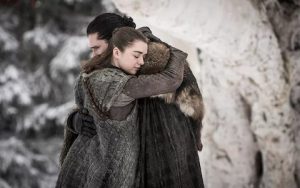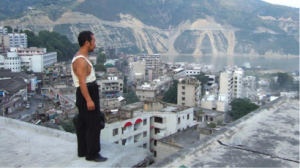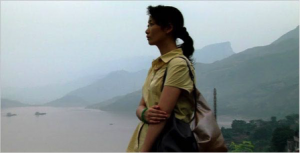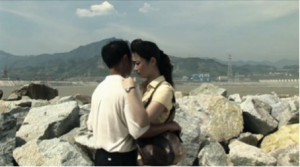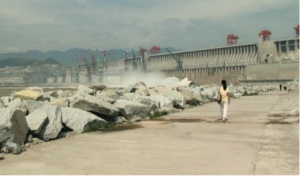Game of Thrones 8.1 The art of the episode – beginning of the fifth act.
The art of the episode – beginning of the fifth act.
The eighth and final season of Game of Thrones has begun. As a reminder: Dramaturgically speaking, this series is rather a long epic feature film and follows the corresponding rules. This structural structure is complemented by a historical drama in the tradition of Shakespeare. Therefore, Game of Thrones doesn’t follow the rules of a series in which each episode must have a dramatic climax on the vertical narrative level. With this series of weekly comments on this series I complete the book „Game of Thrones sehen“, published in 2017.
With this eighth season the fifth act begins. Accordingly, the art of the first episode of this last season is not only to recall important aspects of the previous action after the long production and waiting period, but also to organize the necessary explicit action for the decisive fifth act. References to previous events must be included, especially to those of the first act, in this case the first and second season, which corresponds to the dramaturgical requirements of a last act of a feature film.
This referential level is already established in the first scene when we observe a boy (Felix Jamieson) walking through the crowd to climb a tree to better observe the approaching troops. This scene reflects on the one hand the scene from the first season, in which Bran spotted the approaching caravan of King Robert from the lookout at Winterfell Castle. The boy’s about the same age as Bran was in the first season. Part of the caravan now riding in are Jon Snow (Kit Harington) and at his side Daenerys Targaryen (Emilia Clarke), but also some of the central figures from the different action levels of the previous seasons. 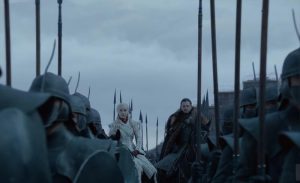
Shortly thereafter, a boy of similar age – Lord Umber (Harry Grasby) – appears during the assembly in the Throne Room, which deals with the preparations for the presumably decisive Battle of Winterfell and the Seven Kingdoms. Also in this situation events of past seasons are called and at the same time the meaning of the forthcoming battle is underlined. Lord Umber, calls for more horses and wagons to secure his family’s contribution to the battle. Sansa (Sophie Turner) responds to this demand, underlining her position as Lady von Winterfell. At the same time a logical and probable situation has been created in which the character Jon once again combines a past decision with the expected dramatic climax and thus creates an elegant dramaturgical arc. In the final scene, the figure of the young Lord Umber is used again to recall one of the very first scenes in the series – the gruesome arrangement on the clearing and Umber recalls the image of the girl nailed to the tree.
The art of the dramatic design of the fifth, final act consists, on the one hand, in leading the action to its dramatic and tense climax and its dissolution, for which references and arcs or spies, depending on which of these concepts seems more understandable to whom. What is meant is that situations, places, events from the exposition are revisited and recalled in the development of the last act, and an echo is playfully received or answered. This is particularly true of the central conflict, which in this case is a multi-layered one: who owns the throne, who is the rightful king of the seven kingdoms, which is a more abstract conflict at the ‚collective level‘.
The other, more emotional question associated with the main character is who Jon’s mother was. This, however, is logically linked into the first mentioned, central level and gives this abstract collective level the concrete, exemplary individual fate. Now we viewers have known the answer to the personal question for some time. Here, a gimmick known from Hitchcock’s films of the ’self-effect‘ is used, which creates tension because we know more than the figure it concerns. The tension is to observe the character Jon, who knows or suspects nothing of his origin, but for whom this knowledge would influence the decisions he has to make.
In this episode, Jon Snow finally learns of his special origins and the completely different situation in which this character finds himself. He is, this is summarized by Sam Tarly (John Bradley) once again Aegon Targaryen, the son of Lyanna Stark (Aisling Franciosi) and Rhaegar Targaryen (Wilf Scolding), and thus the rightful heir of the throne – in the logic of the rules that are set for this kingdom. Of course this scene takes place in the crypt in Winterfell, between the graves of Lyanna and Ned Stark. Here, too, the arc is closed that began with the conversation between Ned Stark (Sean Bean) and King Robert (Mark Addy) just there in the first season. The overall conflict was already embedded in this dialogue.
With this scene between Sam and Jon/Aegon, a change in the quality of the plot has been achieved, a reorientation that gives the plot a twist that makes a reorientation of the plot necessary for a nude change possible.
The organization of the nude changes in this series also includes letting Cersei Lannister (Lena Hadley) start a new intrigue. The immanent conflict between Winterfell and Kings Landing, the south and the north, connects the two regions. This is relevant for the tension building of each series and serves as an additional explicit narrative level that enriches the overall plot. The figure of Cersei is designed in such a way that she still hopes to guarantee herself total power and the throne over the Seven Kingdoms. Implicitly, this constellation also tells of the conflict between an egomaniacal and dictatorial character and a social character that is intent on the welfare of the community. Dramaturgically speaking, each of the intrigues that Cersei leads gives a season a substantial dramatic arc, with the help of which each season can be brought to a certain conclusion without having to adapt the overall plot too much to nude progressions or to a series dramaturgy. In order to also draw a line to the first season on this level of the narrative, Cersei’s lover Euron Greyjoy (Pilou Asbæk) is designed to reflect the behaviour of Joffrey (Jack Gleeson) from the first season. In this series, the principle of evil is passed on from one human character to the next as in a relay race. When Euron Greyjoy, like Joffrey, now acts in close proximity to Cersei, evil has returned to her side.
A further task for the design of the fifth act is to conclude secondary actions.
Right at the beginning of the episode, a scene is set in which Arya and Jon see each other again as an echo of the situation in which Jon hands over her ‚Needle‘, in which Jon’s relationship to Daenerys is also addressed. This constellation is very probably still relevant for the further course. Because in the way characters are organized here, Daenerys has replaced Arya at Jon’s side for some time. Since the character of the Daenerys was threaded into the plot via her brother, it is quite possible that she will be unthreaded from the plot before her next male relative. This character has been able to make enough enemies in the course of the plot to make such a procedure probable. However, this is only a dramaturgical option, not a prediction.
Gendry (Joe Dempsey), the young blacksmith who is also the only surviving heir to King Robert’s throne, now forges weapons out of Dragon glass. The Hound and Arya face each other as well as Jamie and Bran. There are still conflicts to be resolved between these characters.

